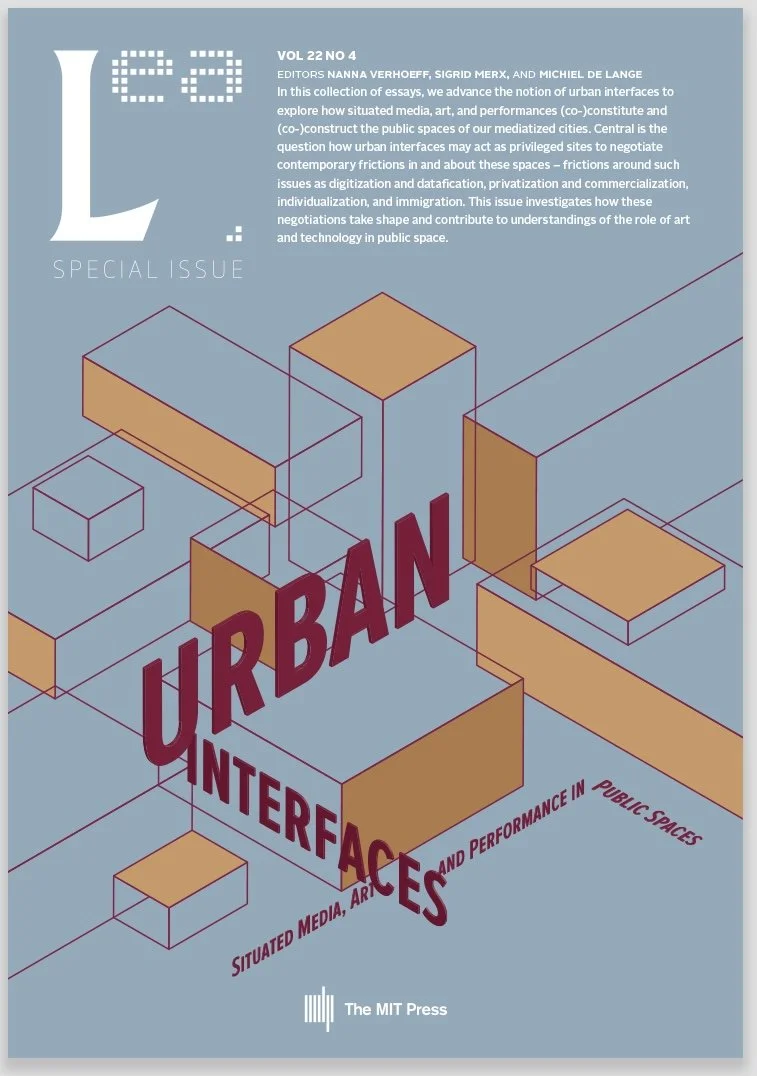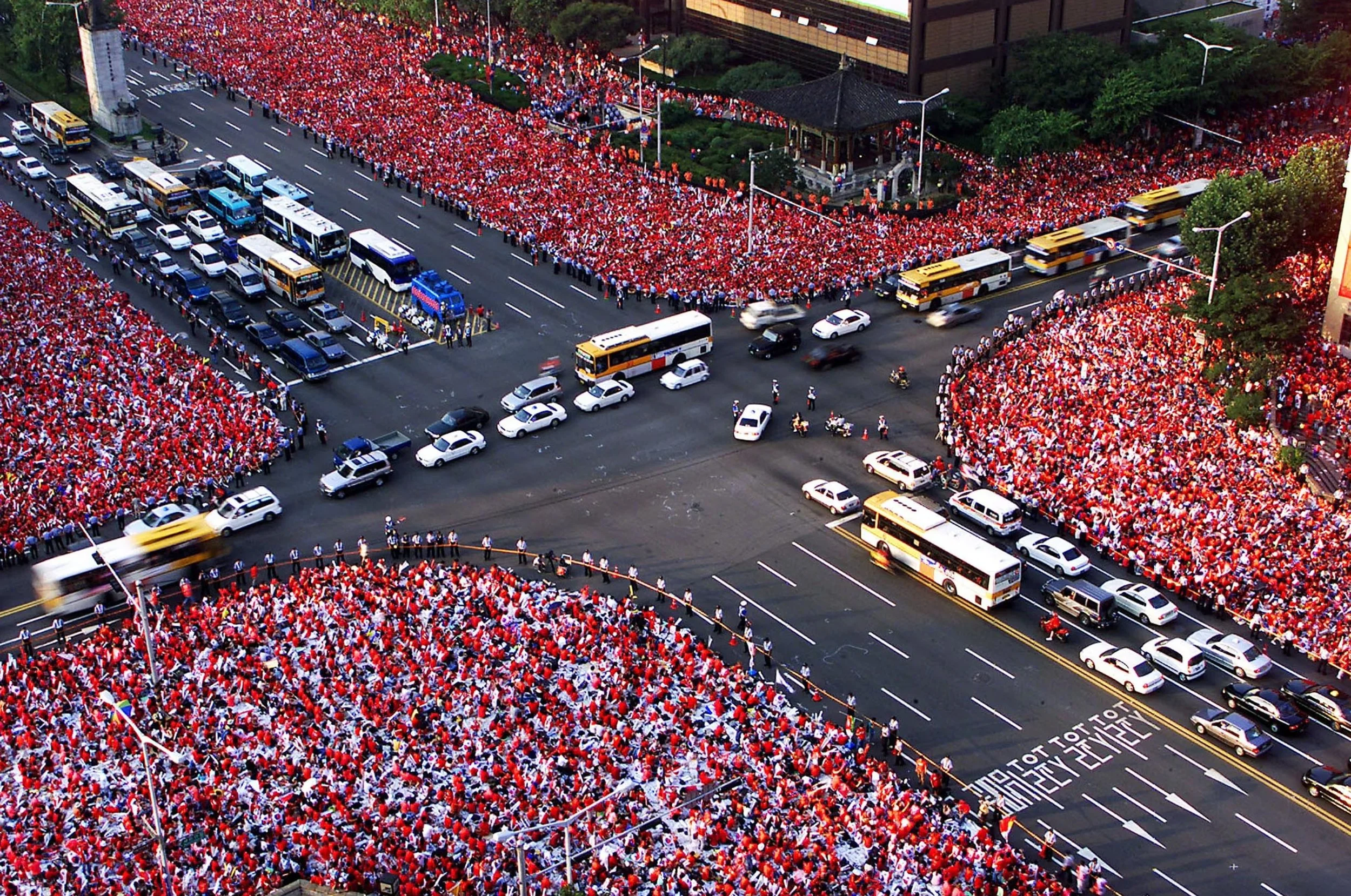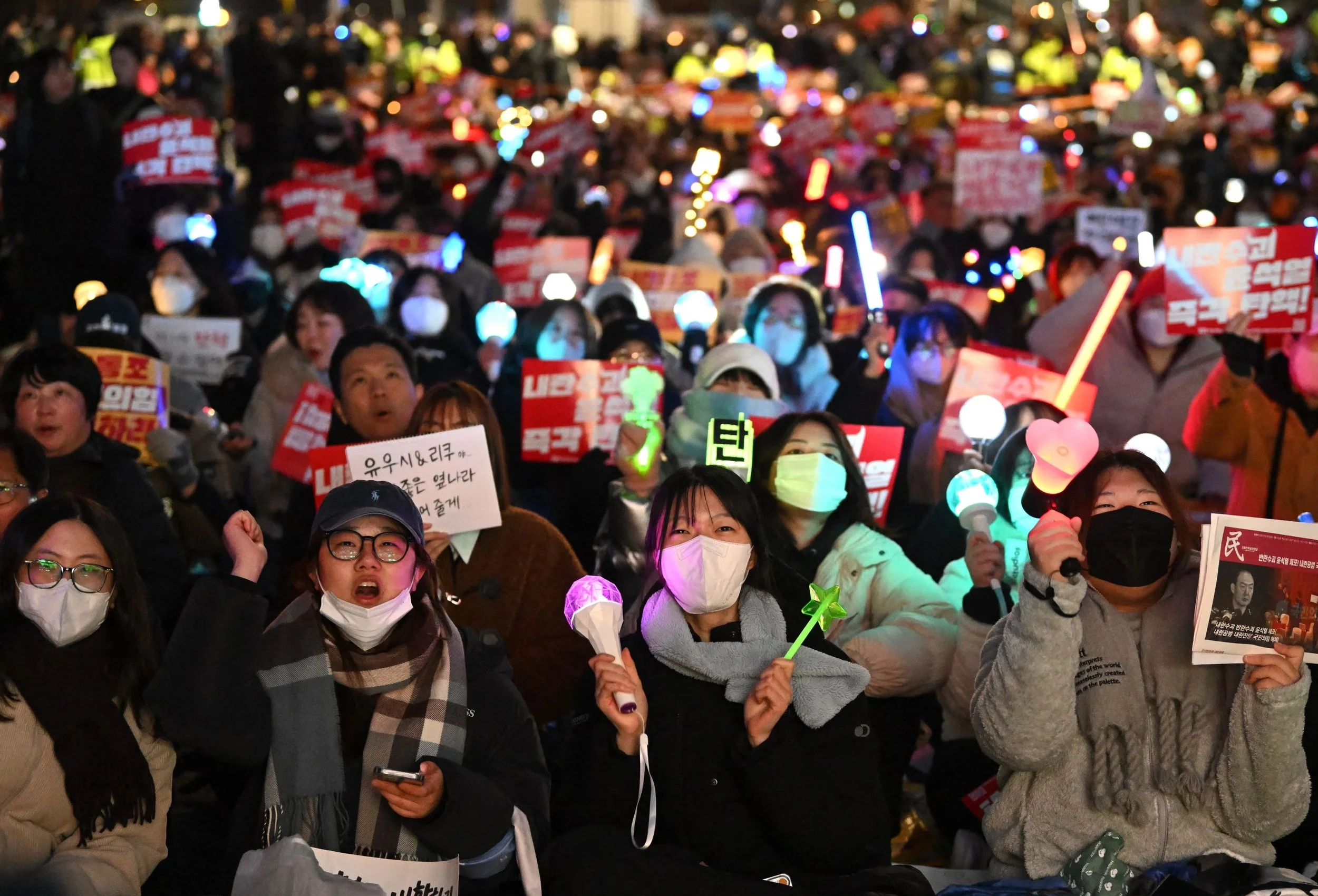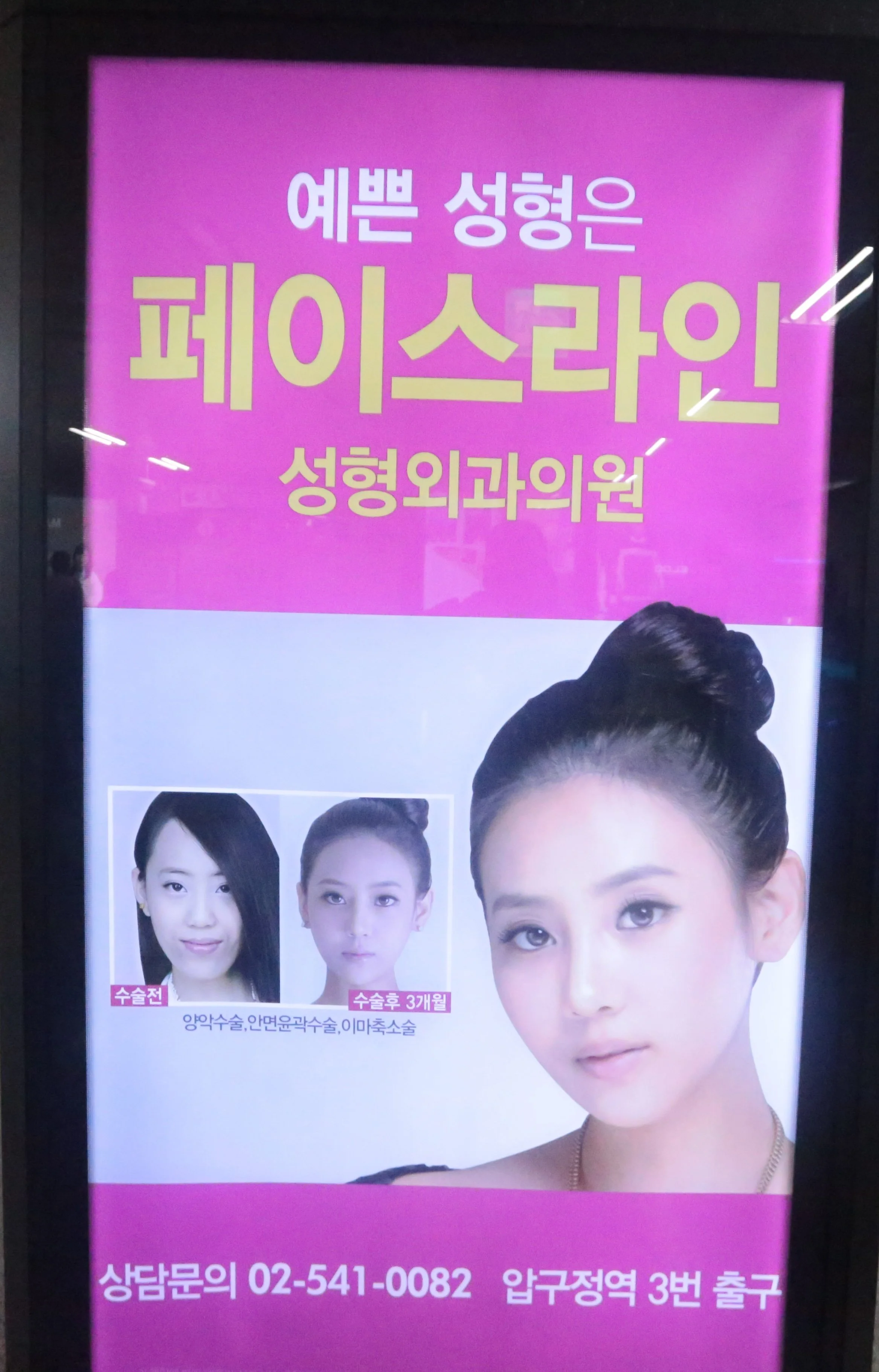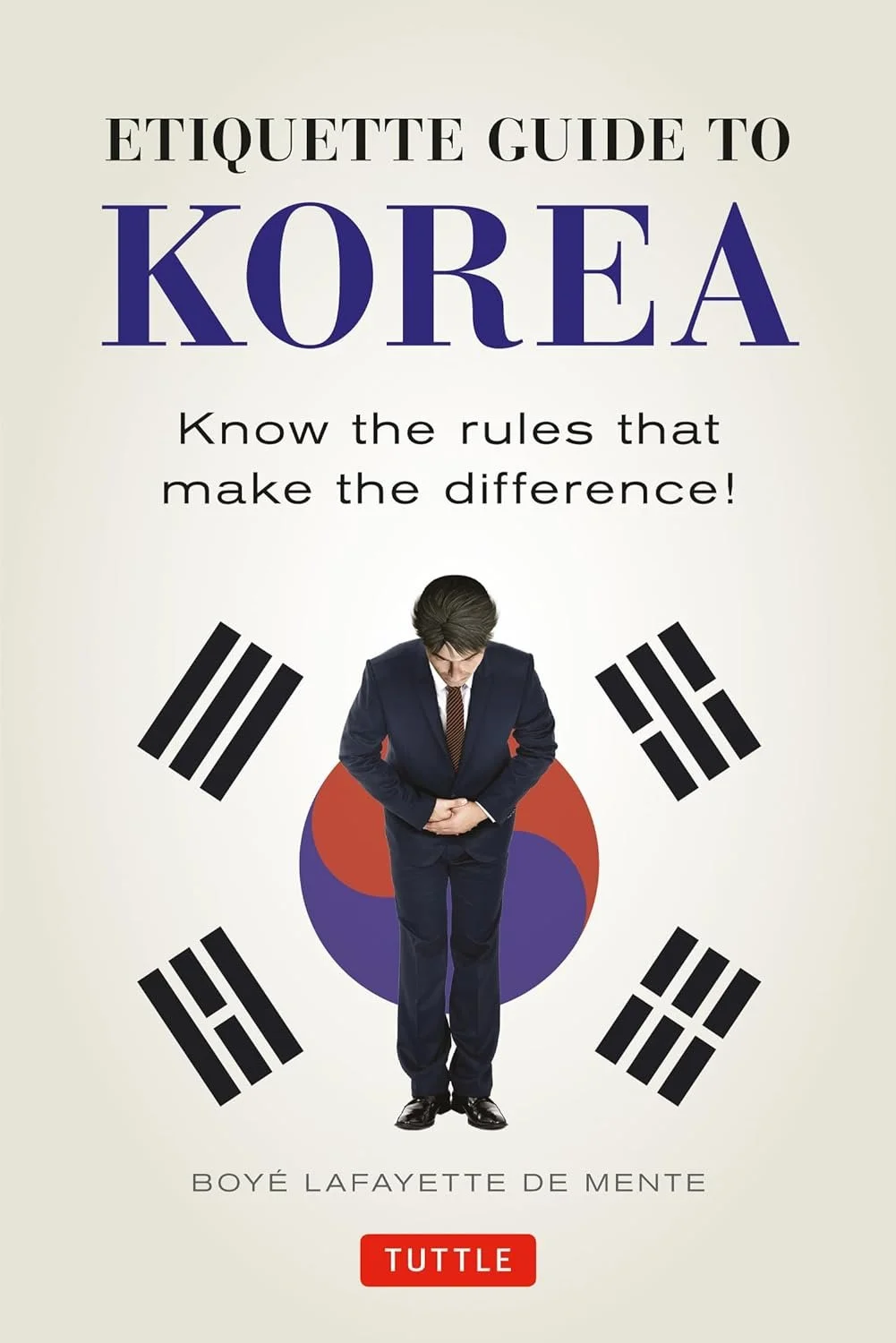Executive Korean Cultural Intelligence: The KARSI Method
The Broadcast That Invented the Future: Why Korean Cultural Intelligence Beats Business Card Etiquette Training
BJ Shugi eating a metric ton of ddeokbokki on Afreeca TV and receiving ten stars (money) for her efforts.
In 2009, something strange started happening on a Korean website called AfreecaTV. Young people began broadcasting themselves eating meals alone in their tiny apartments, chatting with viewers while they consumed everything from instant ramen to elaborate Korean barbecue. Western observers called it bizarre. Korean audiences called it mukbang—"eating broadcasts"—and couldn't stop watching.
Within months, these "broadcast jockeys" were earning substantial incomes from viewers who sent them virtual "Star Balloons"—digital gifts that converted to real money. The top mukbang creators were making more than office workers, simply by eating on camera while building authentic relationships with their audiences.
Here's what seemed impossible at the time: Korea had accidentally invented the future of social media. Interactive live streaming, real-time audience participation, and direct monetary support from viewers to creators—all of this was thriving on AfreecaTV in 2009, years before global platforms discovered these concepts.
YouTube didn't launch live streaming until 2011. YouTube's "Super Chat" feature—allowing viewers to pay for highlighted messages during live streams—didn't arrive until 2017, eight years after Korean viewers were already sending Star Balloons. Twitch introduced its "Social Eating" category in 2016, seven years after mukbang had become a cultural phenomenon.
Korea hadn't just created a weird internet trend. They had built the blueprint for what would become the global creator economy.
But here's what someone with cultural intelligence would have recognized in 2009: this wasn't just weird internet behavior. This was Korean bang spatial logic scaling through digital technology.
Korean "bang" culture represents the uniquely Korean concept of multifunctional spaces that transform based on collective social need. As researcher Jaz Hee-jeong Choi documents, a Korean "bang" "oscillates between the domestic realm, institutionalized place, and urban space" and "blurs the lines between the collective and the individual, privacy and voyeurism."
Someone who understood bang logic would have immediately recognized that Korean mukbang broadcasters weren't just "eating on camera." They were transforming their private bedrooms and tiny kitchens into collective social spaces—digital bangs where intimate domestic activities become shared communal experiences.
An executive trained in cultural intelligence would have seen this pattern in 2009 and predicted: "Koreans are applying traditional spatial concepts to digital media. This will scale globally once other cultures understand the social dynamic." They would have invested in live streaming technology years before their competitors.
This is the difference between cultural compliance and cultural intelligence.
When the Rulebook Breaks Down
Most Korean business training operates like a compliance manual. Learn the hierarchy rules, memorize the business card protocol, avoid causing offense. This approach assumes Korean culture is a collection of exotic behaviors that foreigners must accommodate — a kind of cultural obstacle course to navigate around.
But what happens when your Korean partners suddenly change negotiation terms mid-meeting? When a product that tested perfectly in focus groups flops spectacularly with Korean consumers? When your Seoul team seems politely engaged but produces disappointing results?
The compliance approach offers no answers because it never taught you to read the underlying cultural logic. You memorized what Koreans do, but you never learned why they do it.
Understanding the "why" requires learning to read Korean culture like a text that's constantly being written and rewritten. Consider how one researcher learned to do exactly that.
“Urban interfaces” is a still very-fresh concept in cutting-edge Urban Studies theory. But KARSI breaks such obtuse-sounding-yet-useful theory for you.
The Urban Interface: Reading Seoul Like Code
Dr. Michael Hurt, a visual sociologist who has spent two decades documenting Seoul's transformation, discovered something remarkable: the city functions as a readable “urban interface” that reveals Korean cultural patterns in real-time.
Think of it this way: your smartphone has an interface. It's the screen where you interact with all the invisible complexity happening inside the device. Urban interfaces work exactly the same way. They're the places where massive, invisible forces — global capitalism, climate change, cultural trends — suddenly become visible and palpable in your daily life.
But here's where it gets interesting. These urban interfaces aren't just passive boundaries. They're active translators. They take something as abstract as "social media marketing" or "flexible retail models" and turn it into something as concrete as Seoul's pop-up culture — where an empty storefront becomes a themed café for three months, then transforms into a vintage clothing shop, then becomes an art gallery, all responding to real-time social media buzz and changing consumer interests.
For years, Hurt had been researching Korean street fashion subcultures, documenting how young Koreans used fashion as cultural expression, especially at Seoul Fashion Week. When this industry event moved to the new Dongdaemun Design Plaza in 2014, he followed this subculture to observe how they would adapt to the new venue.
What he witnessed became his most dramatic example of Korean cultural logic in action. When Zaha Hadid's futuristic "spaceship" opened, critics dismissed it as an expensive eyesore. But Hurt was positioned to see something profound happening. The building's sweeping , central ramp positioned against sweeping, metallic curves of the building — and originally designed merely as circulation space down to the subway station exit embedded inside the structure— became more photogenic than any fashion runway inside. The Korean street fashion outsiders he'd been studying transformed this architectural afterthought into the main attraction, creating what Hurt calls the “flipping of the stage of the fashion field."
Suddenly, international media covering Seoul Fashion Week focused more on the unofficial street fashion happening on the ramp than on the official runway shows inside. The new venue’s design logic of “parametricism” (in which the space adapted to the social neds of the people inside it) truly possessed a special magic that had allowed those at the margins to become the center. Just as skilled programmers can diagnose system problems by reading code, executives with cultural intelligence can predict Korean business behavior by reading urban spaces.
Take Seoul's bang culture—the proliferation of specialized rooms for specific activities (PC bangs, karaoke bangs, jjimjilbangs). Westerners see these as quirky entertainment options. But bang spaces reveal something profound about Korean psychology: the preference for flexible, modular environments that can be rapidly reconfigured based on collective need.
This same spatial logic drives Korean business culture. Korean meetings aren't just formal discussions—they're social spaces that can transform from hierarchical information-sharing to collaborative problem-solving to relationship-building, sometimes within the same hour. Executives who understand bang logic can recognize these transformations as they happen and adjust their approach accordingly.
The Madang Moment: When Koreans Become Unstoppable
Gwanghwamun Square in 2002 just before the Italy-Korea match of the 2002 World Cup, when Koreans turned out to make soccer into not just a great moment in sports, but a culture-altering, social event that touched the lives of everyone in the nation, for generations to come. [Source: BBC]
In June 2002, something extraordinary happened in Seoul's Gwanghwamun Square. As Korea advanced through the World Cup, hundreds of thousands of Koreans spontaneously gathered to watch games together. They brought their own screens, shared food with strangers, and created an entirely self-organizing festival that bypassed all official control.
Cultural anthropologist Cho Hae-joang called it "entirely unpredictable," but it actually followed ancient Korean cultural logic. The crowds had transformed Gwanghwamun into a traditional madang—a collective gathering space where individual actions create spontaneous group coordination.
But here's what makes this culturally intelligent rather than historically interesting: the same madang logic that created the World Cup celebration has repeatedly dismantled authoritarian power.
In 2016-2017, when millions of Koreans gathered in Gwanghwamun to demand Park Geun-hye's impeachment, international media marveled at the "festival-like" atmosphere of the protests. Families brought children, vendors sold food, musicians performed—it looked more like a community celebration than political resistance.
The pattern scaled dramatically in December 2024. When President Yoon Suk-yeol declared martial law at 10:30 PM on December 3rd—sending 280 troops to blockade the National Assembly—crowds immediately began gathering at both Gwanghwamun Square and the parliament building. Within hours, tens of thousands had spontaneously assembled. As one protester told CNN: "I couldn't sleep, so I traveled from Paju to Seoul to stay vigilant."
By 4:30 AM, the martial law was lifted—lasting only six hours. But the madang logic continued operating. For months, hundreds of thousands gathered weekly in Seoul's streets, turning political resistance into community celebration. International observers repeatedly noted the "festival atmosphere" of Korean protests, missing that this reflected consistent cultural patterns.
The Constitutional Court's unanimous decision on April 4, 2025 to uphold Yoon's impeachment was met with crowds hugging and crying in the streets—the same Gwanghwamun spaces that had hosted World Cup celebrations 23 years earlier.
Dr. Donna Lee Kwon, who studies Korean spatial behavior, explains: "Madang logic means any space can become a community space when cultural conditions align. Koreans don't need permission or infrastructure—they create collective experiences through spatial practice."
This explains why Korean consumer movements can emerge seemingly overnight, why Korean brands achieve sudden viral success, and why Korean business partnerships often seem to accelerate unpredictably. It's not chaos—it's madang logic scaling up.
Smart executives learn to recognize when Korean business relationships are shifting from formal protocol to authentic madang dynamics. These transitions offer tremendous opportunity, but only if you understand the cultural signals. More importantly, executives who understand madang logic can anticipate how Korean society responds to political and economic crises—crucial intelligence for strategic planning in volatile times.
During the recent anti-Yoon protests in Seoul, international observers often expressed surprise at how much the protests seemed to have a positively festive vibe, and was dominated by largely young women dancing to K-Pop standards. Any KARSI-trained observer would find this to make perfect sense. Image source: [The Guardian]
The K-pop Production Secret
Here's something most executives don't realize: the same psychological patterns that drive K-pop production success also operate in Korean boardrooms.
Dr. CedarBough Saeji, who studies Korean performance culture, discovered that K-pop's legendary training system reveals core Korean organizational psychology: collective perfectionism. Korean teams don't just aim for individual excellence—they create systems where individual improvement enhances group performance, and group success elevates every individual.
This manifests in Korean business culture as intensive preparation, multiple revision cycles, and decision-making processes that seem overly elaborate to Western standards. But executives who recognize these as optimization strategies rather than inefficiencies can leverage them for superior results.
Korean teams excel when given clear collective goals with room for individual innovation within group frameworks. The same dynamics that produce world-class performers produce world-class business results—when properly understood and activated.
Often, visiting observers note the proliferation of plastic surgery ads inside the subway stops all over the Gangnam area, while emphasizing the negative aspects of Korea’s superficiality, materialism, and the social pressure that strict beauty standards bring. While these estimations aren’t wrong, they do often miss the point that the “collective perfectionism” that is part and parcel of obvious things such as K-Pop or K-Beauty also offers a crucial insight into other aspects of life here that are worth understanding – agnostically – as social phenomena unto themselves.
The Academic Revolution: Culture as Strategic Intelligence
This is exactly what we DON’T do.
At the Korean Advanced Research & Studies Institute, we reject the etiquette-list approach entirely. Our faculty — PhD researchers from Harvard, UCLA, Columbiaa, and UC Berkeley — don't teach executives what to do in Korean business situations. We teach them why Korean business situations unfold the way they do.
Instead of memorizing hierarchy rules, executives learn how traditional Korean aesthetics continue to drive modern Korean design preferences, consumer psychology, and business decision-making patterns. Instead of learning bow angles, they participate in traditional Korean madang (courtyard) drumming exercises to understand through embodied experience how Korean collective coordination actually functions.
Instead of cultural sensitivity warnings, executives develop sophisticated analytical frameworks they can apply to any Korean context they encounter. They learn to read Korean spaces, recognize cultural logic shifts, and predict collective behavior patterns.
Why Depth Matters
Here's the uncomfortable truth about most Korean business training: you could learn the same information in a weekend workshop or by reading a guidebook on the plane. Business card etiquette, meeting protocols, gift-giving rules—these are surface behaviors that any competent professional picks up quickly through direct experience.
But cultural intelligence can't be memorized over a weekend. It requires developing analytical frameworks that become more valuable the longer you work in Korean contexts.
Consider two executives preparing for extended Korean market engagement:
Executive A completes a "Korean Business Culture 101" program. They learn proper meeting etiquette, business card protocols, and gift-giving rules. They're warned that Koreans are "relationship-oriented" and "hierarchical." They memorize key phrases in Korean.
Executive B completes KARSI's Cultural Intelligence program. They understand how Korean spatial concepts create social dynamics. They can read when Korean "consensus" represents genuine alignment versus polite disagreement. They recognize how historical experiences of rapid change affect contemporary risk tolerance. They understand why Korean consumer psychology operates differently from Western market assumptions.
But here's the crucial difference: Executive A's knowledge is static. After six months in Korea, they know exactly what they learned in their weekend workshop — and nothing more.
Executive B's knowledge is dynamic. They possess analytical frameworks that help them decode new Korean cultural situations as they encounter them. Every month in Korea, their cultural intelligence becomes more sophisticated. They learn how to learn Korean culture systematically, recognizing patterns and making connections that inform better business decisions.
When both executives encounter an unexpected situation—say, Korean partners requesting major contract changes after initial agreement, or Korean consumers rejecting a product that performed well in Western markets—who responds more effectively?
Executive A consults their memorized rules and hopes for the best. Executive B understands the cultural logic driving the situation and adapts strategically.
Beyond the Business Card
The business case is straightforward: executives who understand the deeper patterns of Korean culture make better decisions. They recognize market opportunities that surface-level training misses. They build authentic relationships rather than merely polite ones. They can predict how Korean organizations will respond to change because they understand the historical and social forces that shape contemporary Korean business psychology.
Most importantly, they can adapt when situations don't match the rulebook—because they understand the cultural logic that generates Korean behavior, not just the behaviors themselves.
Beyond Behavioral Compliance: Learning to Think Culturally
The future belongs to executives who can think culturally, not just behave culturally. In an interconnected global economy, the ability to understand and work within different cultural systems becomes a core strategic competency.
But this isn't about making Korean business partners comfortable. It's about competitive intelligence.
Executives who understand Korean cultural logic don't just build better relationships—they gain predictive insight into market movements, consumer behavior, and societal shifts that drive business opportunities. When you understand bang spatial logic, you can anticipate how Korean digital platforms will evolve. When you understand madang dynamics, you can predict how Korean consumers will respond to social and political events that affect market conditions.
Consider the strategic advantage: while your competitors are memorizing business card protocols, you're reading the cultural patterns that reveal how Korean markets actually function. You understand why certain Korean business strategies succeed while others fail. You can predict which Korean consumer trends will scale globally and which will remain local. You recognize how Korean organizational psychology creates both opportunities and obstacles in market entry.
Korean culture isn't exotic folklore to navigate around—it's a sophisticated system that generates consistent patterns across domains. The mukbang broadcasts, the World Cup gatherings, the K-pop production methods, the democratic resistance movements—these aren't random cultural quirks. They're manifestations of underlying cultural logic that, once understood, becomes strategically powerful.
When Korean companies pivot business strategies rapidly, when Korean consumers embrace or reject products in ways that surprise Western firms, when Korean markets respond to global events differently than expected—executives with cultural intelligence understand why. They can contextualize individual business decisions within larger cultural systems, making strategic moves that align with Korean thinking patterns rather than work against them.
The business case is transformational: cultural intelligence provides competitive advantage through systems thinking. You're not just learning how to behave appropriately—you're developing frameworks for understanding how Korean culture generates business opportunities, market dynamics, and strategic possibilities that others miss.
Because in the end, knowing how to exchange a business card properly won't close the deal. Understanding the cultural systems that drive Korean decision-making will position you to identify opportunities, anticipate challenges, and make strategic moves that your culturally compliant competitors never see coming.
The Real Question
So here's what we ask our executive clients during their first KARSI consultation: Would you rather spend your Seoul market preparation memorizing the proper 90-degree bow for exchanging business cards with a Korean CEO—or would you rather understand Korean cultural logic by learning the basics of singing pansori with Dr. Jocelyn Clark, where you discover through your own voice how Korean communication works through adaptive storytelling, reading audience response in real-time, and adjusting your narrative based on collective feedback—the same interactive pattern that drives Korean business decision-making, consumer engagement, and the legendary audience participation that made K-dramas a global phenomenon?
Here's what makes this opportunity unprecedented: Dr. Clark isn't just a Harvard PhD in East Asian Languages and Civilizations. She's a government-registered 이수자 (certified successor) in gayageum sanjo—among the first foreigners ever to achieve this formal designation within Korea's national intangible cultural heritage system. This means you're not learning Korean traditional music from an academic observer; you're learning from a living legend who has been formally certified by the Korean government as qualified to transmit authentic Korean traditional arts to the next generation.
Would you rather rehearse small talk scripts for Korean business dinners—or would you rather spend an afternoon with Dr. Hurt talking to and interviewing the cool kids hanging out in a Seongsu-dong popup? As the first professional street fashion photographer in Korea and the globe's most prominent researcher of Korean fashion cultures through ethnographic techniques, Dr. Hurt doesn't just show you Korean youth culture—he teaches you to read how Korean youth culture transforms empty spaces into community laboratories for testing global trends.
Would you rather memorize hierarchy protocols for Korean corporate meetings—or would you rather learn from a few days tasting the life of a K-pop trainee with Dr. CedarBough Saeji, where you'll experience the collective perfectionism, systematic feedback loops, and group-oriented individual excellence that drives not just Korean entertainment, but Korean business innovation?
Dr. Saeji is a UCLA PhD in Culture and Performance who bridges traditional Korean performance and contemporary popular culture with unmatched scholarly rigor. When she guides executives through K-pop training systems, you're learning from the scholar who literally wrote the academic framework for understanding how Korean popular culture functions as both entertainment and cultural transmission.
Here's what Dr. Clark teaches our executives: Korean "tradition" isn't a museum piece to preserve—it's a living system that Koreans actively deconstruct and reconstruct for contemporary use. When you learn pansori, you're not learning ancient folklore; you're learning how Koreans systematically extract functional principles from historical practices and apply them to modern challenges. The same cultural logic that allows Korean companies to rapidly pivot business strategies, the same adaptive intelligence that helped Korean street fashion flip Seoul Fashion Week's power dynamics, the same systematic innovation that turned Korean entertainment into global cultural influence.
These are just some examples of the kinds of professors, courses, and approaches that our faculty has to offer. Dr. Heather Willoughby, Columbia PhD and Professor at Ewha Womans University—who literally pioneered the academic study of Korean popular music with her 2006 groundbreaking work that forced Korean studies academics to take K-pop seriously as legitimate scholarship—guides executives through the gender dynamics and power structures that operate in Korean business contexts through cultural performance. If this is the kind of education you would prefer—learning from living legends who combine unparalleled access with world-class scholarship—and you recognize that you would benefit from this level of cultural intelligence training, then surely you should look into working with us for a customized executive program.
The executives who choose cultural intelligence over cultural compliance don't just succeed in Korean markets—they return home with analytical frameworks that revolutionize how they think about culture, markets, and human behavior everywhere. They've learned to read the deeper patterns that generate surface behaviors, rather than simply mimicking those behaviors.
Because in the end, any competent professional can learn to bow correctly in three minutes of YouTube research. But understanding why Korean organizational psychology produces systematic innovation through collective perfectionism? That takes cultural intelligence. And that intelligence, once developed, becomes your competitive advantage in every cultural context you encounter for the rest of your career.
The question isn't whether you can afford to invest in real cultural intelligence. The question is whether you can afford not to.
FINITO
AI Usage Acknowledgment
This article was written with significant assistance from Claude AI (Anthropic) for research, structuring, and content development. The core theoretical insights about Korean cultural intelligence, the KARSI program philosophy and methodology, the analysis of bang spatial logic and madang dynamics, and the strategic business arguments for cultural intelligence over cultural compliance represent original human research and program development. AI assistance was utilized for: (1) researching recent Seoul protests and political developments; (2) structuring the narrative in an accessible, business-focused format; (3) synthesizing complex cultural concepts into executive-oriented explanations; (4) fact-checking historical timelines and events; and (5) organizing the overall argument flow. The core pedagogical innovations and cultural analysis frameworks remain entirely the work of KARSI faculty and researchers.
Resources
Korean Cultural Spatial Concepts:
Choi, J. H., Foth, M., & Hearn, G. (2009). Site-specific mobility and connection in Korea: bangs (rooms) between public and private spaces. Technology in Society, 31(2), 133-138.
Kwon, D. L. (2017). Stepping in the madang: Sustaining expressive ecologies of Korean drumming and dance. University of Kentucky Press.
Korean Cultural Intelligence Research:
Hurt, M. W. (2019). From fashion fandom to phenom: The paepi and the field-flipping process of Seoul Fashion Week street fashion. Korea Journal, 59(2), 26-51.
Saeji, C. T. (2018). Idol dance and Korean pop music fandom. The Journal of Fandom Studies, 6(1), 53-71.
Live Streaming and Digital Culture:
Hong, E. (2014). The birth of Korean cool: How one nation conquered the world through pop culture. Picador.
Jin, D. Y., & Yoon, K. (2016). The social mediascape of transnational Korean pop culture: Hallyu 2.0 as spreadable media practice. New Media & Society, 18(7), 1277-1292.
Korean Political and Social Movements:
Cho, H. J. (2000). Living with conflicting subjectivities: Mother, motherly wife, and sexy woman in the transition from colonial-modern to postmodern Korea. In Under construction: The gendering of modernity, class, and consumption in the Republic of Korea (pp. 165-195). University of Hawaii Press.
Urban Interfaces Theory:
Bu, B. (2020). Urban interfaces: Boundary spaces in contemporary urbanism. Syracuse Architecture Review, 45(2), 12-28.
Kaika, M., & Ruggiero, L. (2016). Land financialization as a 'lived' process: The transformation of Milan's Bicocca by Pirelli. European Urban and Regional Studies, 23(1), 3-22.
Morton, T. (2013). Hyperobjects: Philosophy and ecology after the end of the world. University of Minnesota Press.
Mueller, N., Rojas-Rueda, D., Cole-Hunter, T., de Nazelle, A., Dons, E., Gerike, R., ... & Nieuwenhuijsen, M. (2015). Health impact assessment of active transportation: A systematic review. Preventive Medicine, 76, 103-114.
Korean Advanced Research & Studies Institute offers intensive cultural intelligence programs for executives working with Korean markets, partners, and teams. Learn more about our faculty-led modules combining academic rigor with practical application.

